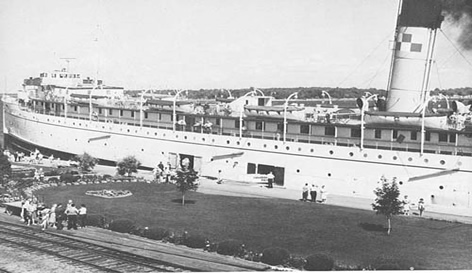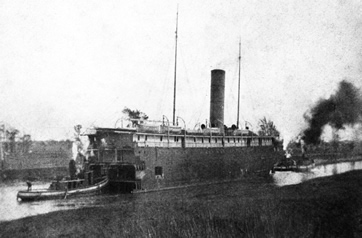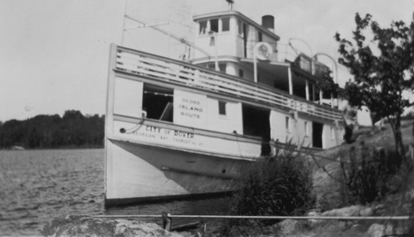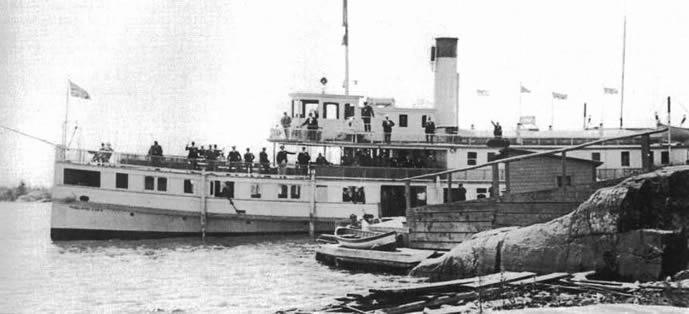Ham Radio Station
RMS Pactor / Robust Packet / Winmor / Relay Operations
Home
| Event Calendar |
| QTH - Location |
| Photos - Users MM's |
| Photos - Users |
| Photos - Lakes |
| Maritime Radio |
| Links |
Maritime Radio History |
||
| CANADIAN GREAT LAKES MARITME RADIO STATIONS - 1950 | PRESCOTT RADIO - Current Repeater Coverage |
|
THUNDER BAY RADIO- Current Repeater Coverage |
SARNIA RADIO - Current Repeater Coverage |
|
A fully integrated centre, MCTS Thunder Bay is located at the western end of Lake Superior, in the Coast Guard Base at Keefer Terminal. Its radio coverage is quite vast as Lake Superior, the St. Mary’s River, northern Lake Huron, Georgian Bay, Lake Winnipeg and Hudson Bay all fall under MCTS Thunder Bay’s area or responsibility. MCTS Thunder Bay is able to provide these services with the fourteen (14) peripheral sites scattered across central Canada, of which seven (7) were inherited with the integration of CGRS Sault Ste. Marie and CGRS Wiarton in April of 1997. Wintertime sees the thirteen staff members drop to six full-time employees as the ice build up all but stops shipping in this area, with the locks at Sault Ste. Marie closing for three months every year. History of
Thunder Bay, Sault Ste. Marie, Wiartion, and Midland Stations: A scheme was later drawn up to set up stations approximately 180 miles apart from Port Arthur to Kingston. The Kingston station had sufficient range to communicate with Montreal, linking the proposed system with the east coast system and giving straight-through communication to Cape Race, Newfoundland. The early Canadian Great Lakes stations all ran 5000 watt rotary
spark-gap transmitters (except MUG which used 3500 watts).
The rotary spark-gap transmitters (for the Canaian Great Lakes stations)
used 75000 volts and produced a very nice sounding "musical" signal. All the
wireless operators, of that time, noted that those types of transmitters
sounded as if they were singing. In 1925, all the Canadian Great
Lakes stations converted over from spark-gap to CW tube transmitters with a
very nice sounding, stable and controlled signal. They always ran the
transmitters in the "ready to go" to answer ships on 500kHz. Coast stations
didn't have to retune. One antenna was tuned for 500 kHz and a second for The DOT, formed in 1938, took over control of the marine radio
stations (from Dept. of Marine & Fisheries). The late 1950's would have been around the time that In 1962 the Port Arthur station was combined with the aeradio station at the Fort William airport.
The aeradio/marine radio station was under the authority of the air services branch in Winnipeg. Later in 1961 the marine
services were collocated with air services at the Sault Ste. Marie Airport—after nearly 50 years
of operating from the original site. The Great Lakes CW service was restarted in the 1980's, first at VBG Toronto. Due to horrendous AM interference with commercial power house AM broadcast stations, the service was moved to VBB in the late mid-1980's. MF/CW reappeared as a service on the Great Lakes as Sault St. Marie/VBB was again heard over the air waves. This CW service on the Great Lakes was discontinued with the closure of the station. On March 31, 1997 the station was remotely controlled from the Thunder Bay MCTS Centre. The services of both Wiarton and Sault Ste. Marie were integrated at the new Thunder Bay site, on April 11, 1997. VBA, being a terminus port. had the bulk of radio traffic to send and receive, and never had any problems with the ship RO's, most of whom
spoke very good English, or the bridge officers, where the pilot stood by to
assist. All foreign ships had to carry English speaking (or
French) pilots during their Seaway transits to Thunder Bay.
The wireless coast station opened at Midland on July 8, 1912. The site for the original station was
secured on the hill overlooking the harbour. Just at the end of 1954, renovation
of the Midland Coast Station (VBC) was completed. A new high-powered radiotelephone
transmitter was installed as well as telephone terminal equipment. VBD Toboermory was built in 1912, also. The current
owner of the buildings runs it as a B&B. Art is planning on having his
centennial in 2012. More info at http://trailsendlodge.org/trailsendlodge/new%20html/historyTRAILS.html The official birthday party for VBA centenniary celebrations occurred on 1 October, 2010, and the special event
station CG3MUG is all set to roll starting 1 November for the entire month. More information can be seen at http://my.tbaytell.net/va3rom (Thanks to Lori and Robert@ VBA Thunder Bay for the above info. They both operate the VE3VBA station from the Coast Guard Station.) |
||
| In an old postcard folder here at VA3LKI, both the SS North American
and SS South
American arrive in Midland Harbour back in the 1940's. One can almost see the radio antennas strung between the masts. The old foundry and elevator in the background have been replaced by a modern marina and new "condo" development. |
The SS South American was one of the last Great Lakes ships to use CW. This photo |
|
Here is a photo of the SS Keewatin during the days when I worked onboard in the Steward's Crew. Still one of the best times of my life. An yes, she did burn coal. Because the Kee and her siste ships were too big (at the time) for navigating the St. Lawrence locks, they were engineered to be split into two sections at the eastern end of the system, and towed thru to the Great Lakes where they were reassembled for service.
Note from VA3LKI station Sysop. Personal Connections Shown below is a photo of one of the vessels that worked the south end of Georgian Bay. One of the Sailing Masters of the City of Dover, was my grandfather. As a result, I was treated to frequent rides aboard "The Dover", although I was quite young at the time. To this day, I still recall the smell of the hot oil and lubricants that were religously applied to the brass and metal fittings, gears and related machinery. A photo of the other vessel my grandfather once captained - the Midland City - is also included.
|
||
The site administrator reserves all rights and no portion of any pages,
graphics, or data may be reproduced in any manner whatsoever




